► Circle is the locus of all such points which are equidistant from a fixed point, this point is known as centre while distance of any point from centre defined as radius of circle.

► A line joining two points on a circle is known as the chord of the circle.
A line which intersects a circle in two distinct points is called a secant of the circle.
► Minor and Major Arc: An arc whose length is less than the semicircular arc is called minor arc and if greater than semicircular arc is called major arc.
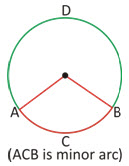
► The segment formed by minor arc along with chord is called minor segment and the segment formed by major arc is called the major segment.
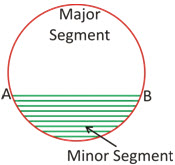
Points to Remember:
► Circles having same centre are said to be concentric circles.
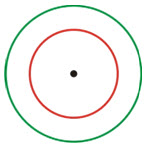
► Two circles are congruent if and only if they have equal radii.
► If r1 = r2 then both circles are congruent.

► To arcs of a circle (or of congruent circles) are said to be congruent if and only if they have the same degree measure. Thus, arc PQ = arc RS if and only if, m arc PQ = m arc RS.
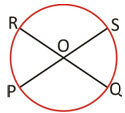
► The perpendicular from the centre of the circle to the chord bisects the chord. Conversely, the line joining the centre of a circle to the mid-point of a chord is perpendicular to the chord.
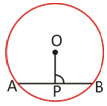
AP = PB
► There is one and only one circle passing through three non-collinear points.
► Equal chords of a circle (or of congruent circles) are equidistant from the centre (or corresponding centers). Conversely, chords of a circle (or of congruent circles) which are equidistant from the centre or corresponding centers are equal.
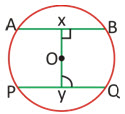
► If AB = PQ then ox = oy and vice versa
► The degree measure of an arc of a circle is twice the angle subtended by it at any point of the alternate segment of the circle with respect to the arc.

► ∠1 = 2∠C where O is the centre of the circle.
► On a segment angle at centre is double of angle on circumference of a circle.
Theorem 3:
► The angle between a tangent and a chord through the point of contact is equal to an angle in the alternate segment.
∠1 = ∠2
∠3 = ∠4
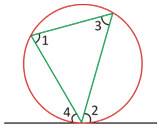
► Any two angles in the same segment of the circle are equal.
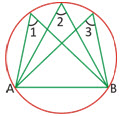
∠1 = ∠2 = ∠3
► Any angle in the semicircle is the right angle. Conversely, the arc of a circle subtending a right angle at any point of the circle in its alternate segment is a semicircle.
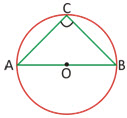
► If a line segment joining two points subtends equal angles at two other points lying on the same side of the line containing the segment, the four points lie on the same circle.
► Equal chords of a circle (or of congruent circles) subtend equal angles at the centre (or corresponding centers). Conversely, if the angles subtended by the chords of a circle (or of congruent circles) at the centre (or at the corresponding centers) are equal, the chords are equal.
► The sum of either pair of opposite angles of a cyclic quadrilateral is 180°.
► Conversely, if the sum of any pair of opposite angles of a quadrilateral is 180°, then the quadrilateral is cyclic.
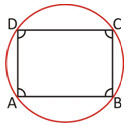
∠A + ∠C = 180º
∠C + ∠D = 180º
► All the four vertices of a cyclic quadrilateral are on circle.
► If the side of a cyclic quadrilateral be produced, then the exterior angle so formed is equal to the opposite interior angle.
Theorem 1:
► The tangent at any point of a circle and the radius through the point are perpendicular to each other.
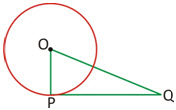
∠OP Q = 90º
where op = r (radius)
Theorem 2:
► If two circles touch each other, the point of contact lies on the straight line through their centers.
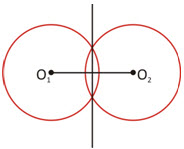
Theorem 3:
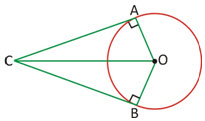
CA = CB
∠AOC = ∠BOC
∠ACO = ∠BCO
► If two tangents are drawn to a circle from an exterior point, then
The tangents are equal in length;
The tangents subtend equal angles at the centre;
The tangents are equally inclined to the line joining the point and the centre of the circle.
Intersecting Chords and Tangents:
Theorem 1:
► If two chores of a circle intersect internally or externally, then the products of the lengths of their segments are equal.
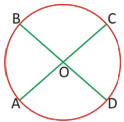
OB × OD = OA × OC

OQ = OP = OS × OR
Theorem 2:
► If a chord and a tangent intersect externally, then the product of the length of segments of the chord is equal to the square of the length of the tangent from the point of contact to the point of intersection.
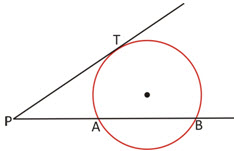
PA × PB = PT2